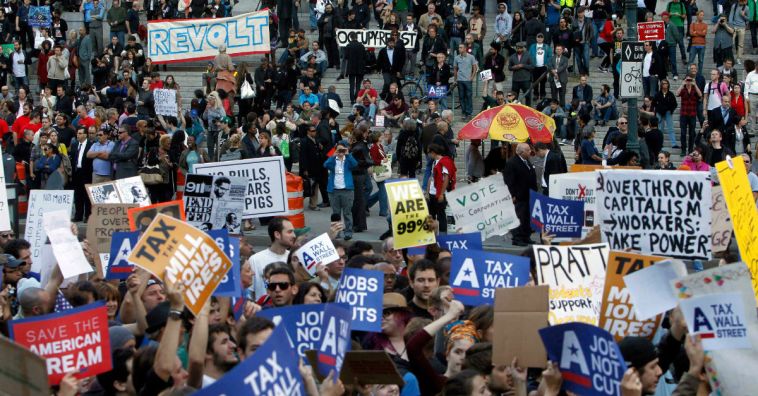Each year, Americans celebrate the contributions of our nation’s workers on Labor Day. However, over the years there seems to be less to celebrate as Big Labor has worked to gain power at the expense of workers’ choices and their freedom of association.
Videos By Rare
This Labor Day, Americans should consider the effect Big Labor is having on the U.S. economy and our personal liberty and what policies our leaders should pursue to reverse the damage caused by unions over the years.
For example, could your family use an additional $13,100 this year to pay the bills or take that much-needed vacation? If you live in a forced-unionism state, that is what the lack of a right-to-work law could be costing you.
In addition, federal law mandates that in an organized workplace, the union act as the exclusive bargaining representative for all employees, and whether you’re a union member or not. This bargaining monopoly costs workers about 15 percent in lost income.
And these numbers don’t include the billions of dollars in debt states have racked up through generous, union-negotiated pension benefits, for which taxpayers are on the hook. So, which states are doing the best and worst in terms of protecting you from costly labor laws?
Recent research published by the Competitive Enterprise Institute looked at state pension programs, the consequences of right-to-work laws, and the cost associated with unions’ monopoly bargaining. The result is a set of state rankings to educate Americans on the labor policies affecting us and to point the way toward better solutions.
State right-to-work laws, which free workers from having to pay union dues as a condition of employment, have a huge economic effect—adding an average of more than $3,250 to each resident’s wallet every year, according to a study by Ohio University economics professor Richard Vedder and independent researcher Jonathan Robe.
Forced unionism, by contrast, artificially raises labor costs, reduces investment and capital resources available for workers, and lowers productivity. Think Detroit. The result is businesses leave, less wealth is created, and the economy tanks, ultimately impoverishing workers.
The 24 states with right-to-work laws saw per capita income grow about 10 percent more than in forced-unionism states. Job growth averaged 71 percent nationwide over 1977 to 2012—50 percent in forced-unionism states, compared to 105 percent in right-to-work states.
People have begun to catch on, and are moving in large numbers from forced-unionism states to right-to-work states—about 5 million over the last decade. The harshest effects of forced unionism have been felt in Alaska, followed by Connecticut, California, New Jersey, and Illinois.
However, even states with right-to-work laws suffer losses due to unions’ monopoly bargaining. Another study by Ohio University economist Lowell Gallaway and Robe examines how the outdated National Labor Relations Act’s bargaining “exclusivity” gives unions a monopoly to speak for you, no matter what your views.
Today, in an age where technology has freed people young and old to express your own views in more ways, with greater ease and speed, and in more places than ever before, at virtually any time, a Depression-era union monopoly on workers’ speech is obsolete, to say the least.
Over a 50-year period, this analysis shows that monopoly bargaining cumulatively cuts worker wages by 15 percent. Furthermore, because wages are such a big part of America’s gross domestic product, monopoly bargaining costs the nation a 10-12 percent loss in annual economic growth.
Lost economic growth from collective bargaining is felt most in Michigan, Alaska, Nevada, New York, and Hawaii. South Carolina, North Carolina, Mississippi, South Dakota, and Texas have been least affected.
A good first step to stop these losses would be to give employees the ability to opt out of union monopoly representation and relieve unions of the responsibility of representing individuals who don’t want union representation.
To make matters worse, states are facing a collective shortfall of $1 billion in unfunded state-government pension liabilities according to a study by economist Robert Sarvis.
Lured by political payback, legislators pay generous pensions to their union supports at the expense of future generations. The problem is exacerbated by dubious accounting methods. State pension managers calculate payments using discount rates based on overly optimistic investment returns, and as a result, states underestimate their current payments for meeting future liabilities. By the time the bill comes due, the politicians who made those promises are out of office, and the deficit is someone else’s problem.
New Mexico has the severest underfunding of its pensions, followed by Illinois, Mississippi, Kentucky, and Ohio. Nebraska is in the best shape, with North Carolina, Tennessee, Delaware, and South Dakota behind it.
The answer to crushing pension debt is to move toward a defined-contribution pension model. Michigan, New Jersey, Utah, Rhode Island, Kansas, and Oklahoma have all made positive legislative changes to their pension systems.
It’s time to reverse the damage that forced unionism, monopoly bargaining, and off-the-books state-government pension debt has done. Our liberty and our economy have suffered for long enough.
This Labor Day our leaders should consider policies that protect American liberty and our economy by insisting on right-to-work laws, encouraging more employee choice, and supporting a better method for ensuring our pension programs are adequately funded for the future.
Aloysius Hogan is a senior fellow and Alex Bolt is a research associate at the Competitive Enterprise Institute.

